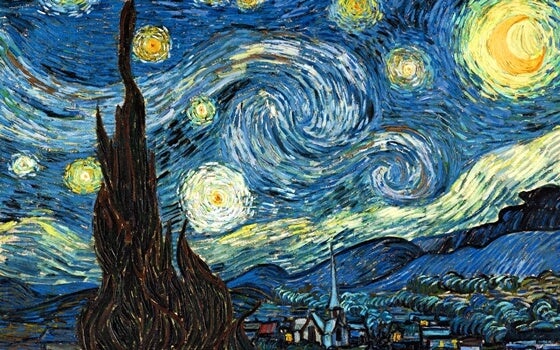Vincent Van Gogh explained in his letters that, for him, the sounds had colors and that certain colors, such as yellow or blue, were like fireworks stroking his senses. And the starry night? They remain vibrant screens alive and clear evidence, all of them, that the famous post-impressive genius was synesthetic.
This fact may be new to many people, however, it became apparent for a long time after analyzing several of these letters that Van Gogh sent to his brother Theo, or even through the analysis of his paintings. for example, he has demonstrated the presence of “fotismos” in his painting style, that is, a type of sensory response that presents those with chromatase.
“Color represents the enthusiasm of life. -Vincent Van Gogh-
Chromasthesia is an experience of the senses, in which the person associates sounds with colors, higher tones, for example, cause the perception of more intense, brighter and brighter colors, in turn colors can also induce auditory or musical sensations. What happened to Franz Liszt when he composed and is also what Van Gogh felt, that genius halfway between madness and manic depression that left this world without knowing what was wrong with him and the importance of his creations in art.
In 1881, in The Hague, Vincent Van Gogh wrote a letter to his brother explaining that each painter had his favorite color palette and that these favorite shades were a means by which the artist managed to traverse the darkness of his heart to find light. He also noted that some painters had the majesty to use their hands with the virtuosity of a violinist and that some works became pure music.
A few years later, in 1885, Van Gogh decided to study piano, however, this experience was short-lived and ended in the worst possible way for him. Shortly after the start of classes, the artist claimed that the gaming experience was breathtaking. : each note evoked a color. His teacher, frightened by these statements, decided to expel him from the stage after declaring that Van Gogh was “crazy. “
This information keeps making us smile a little, because among all the pathologies that Vincent Van Gogh suffered, the latter, experiencing chromatic sensations with musical stimuli was undoubtedly his greatest gift, a nuance that perhaps gave his art an exceptional expressiveness and a sensitive richness not observed so far. His energetic strokes, for example, brought every detail of the movement, in which yellow allowed him to feel the joy, the sound of hope that for moments so lacked in Van Gogh’s life.
“When I miss a religion, I go out at night to paint the stars. – Vincent Van Gogh-
At the same time, one thing his peers criticized was that the use of the colors he made had nothing to do with reality, but he was secondary to Van Gogh, it didn’t really matter, the colors for him were the expression and the search for certain emotions and sensations.
As he once explained to his brother, he felt unable to copy reality, his hands, his mind, his gaze never managed to reconcile with nature or with everything others clearly saw, for Van Gogh the world was beating differently. , had other perspectives, other forms that materialized in his own way. After all, synesthesia has the same capacity, that of allowing the person to feel life in an almost privileged but strange way at the same time.
Synesthesia is not a disease, it is practical to clarify this information from the beginning Is it a neurological condition through which there is unusual communication between the senses that allows you to see sounds, taste colors or listen to shapes?, Elisabeth Sulser, the only woman in the world who has a combination of all these characteristics: she sees the colors while listening to music or any sound and also tests them.
Neurologists say that when we come into the world, we are all synesthetic, but as our neural structures mature, all these senses specialize until they differ from each other.
However, 4% of the population retains these synesthetic abilities, and the vast majority of these people, curiously, develop artistic skills.
Synesthesia, for example, is very common among musicians and painters, with examples such as Van Gogh and writers such as Vladimir Nabokov; in fact, he explained that much of his family also had this gift, but that he still felt he did not have it. use that skill as much as it should, mainly because I didn’t understand it.
It was the same thing that Vincent Van Gogh himself must have felt, the feeling that the world, in his eyes and ears, was sometimes chaotic and disconcerting, the feeling that this peculiarity was another characteristic of his madness in the eyes of the world. , today, we already know that synesthesia has placed a particular lens in his eyes, from which he has seen reality in a way that continues to fascinate us to this day.

